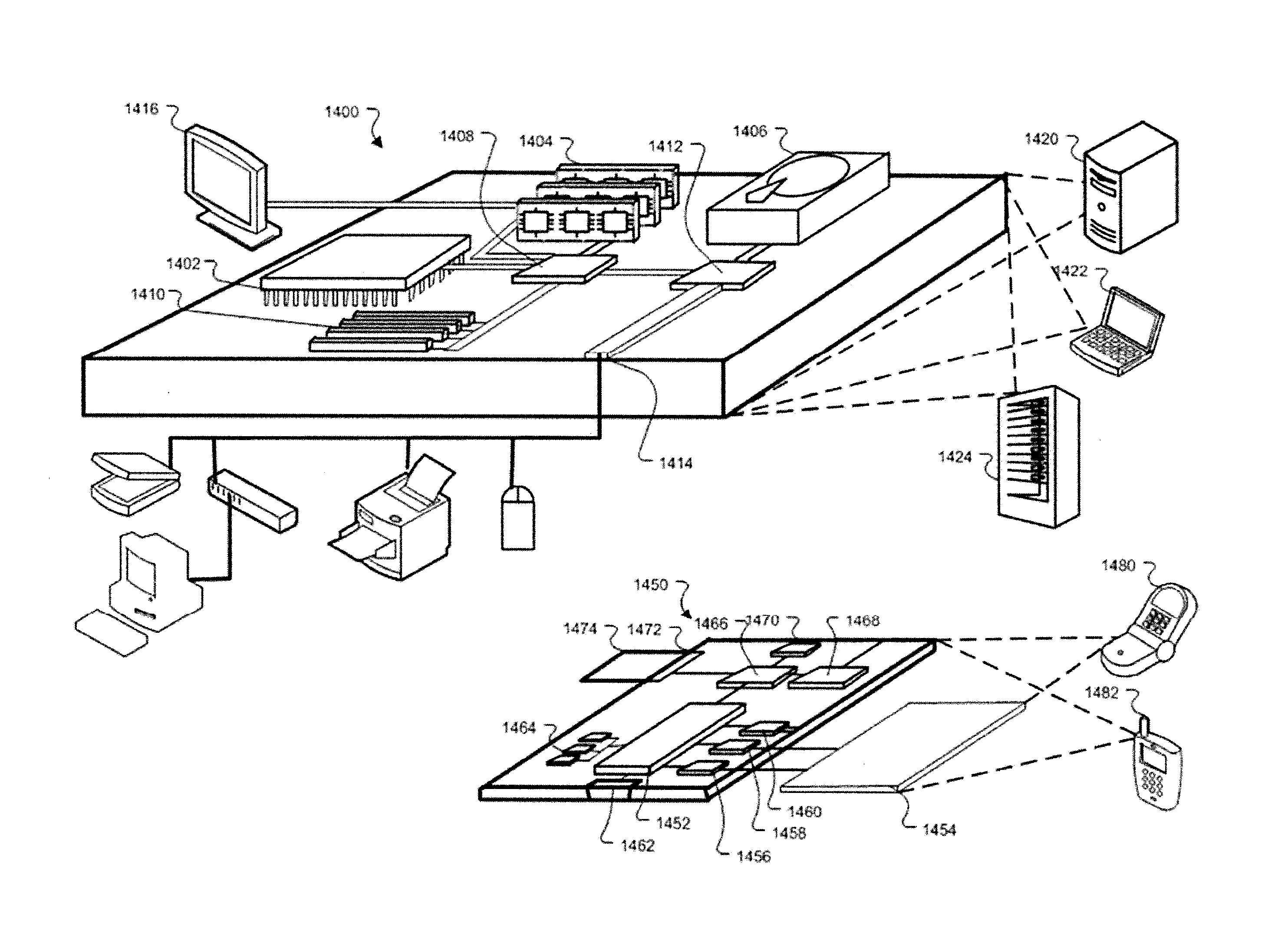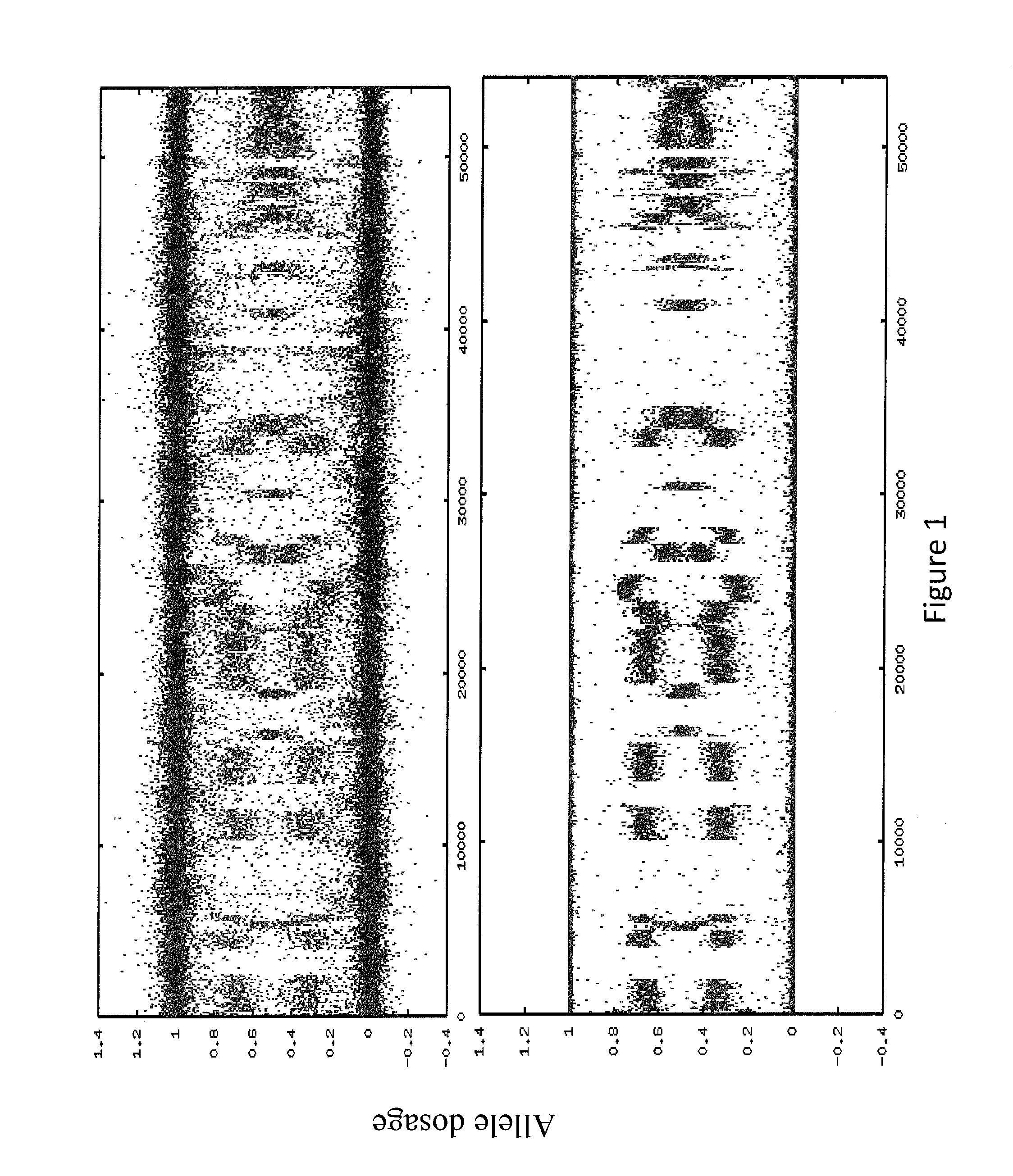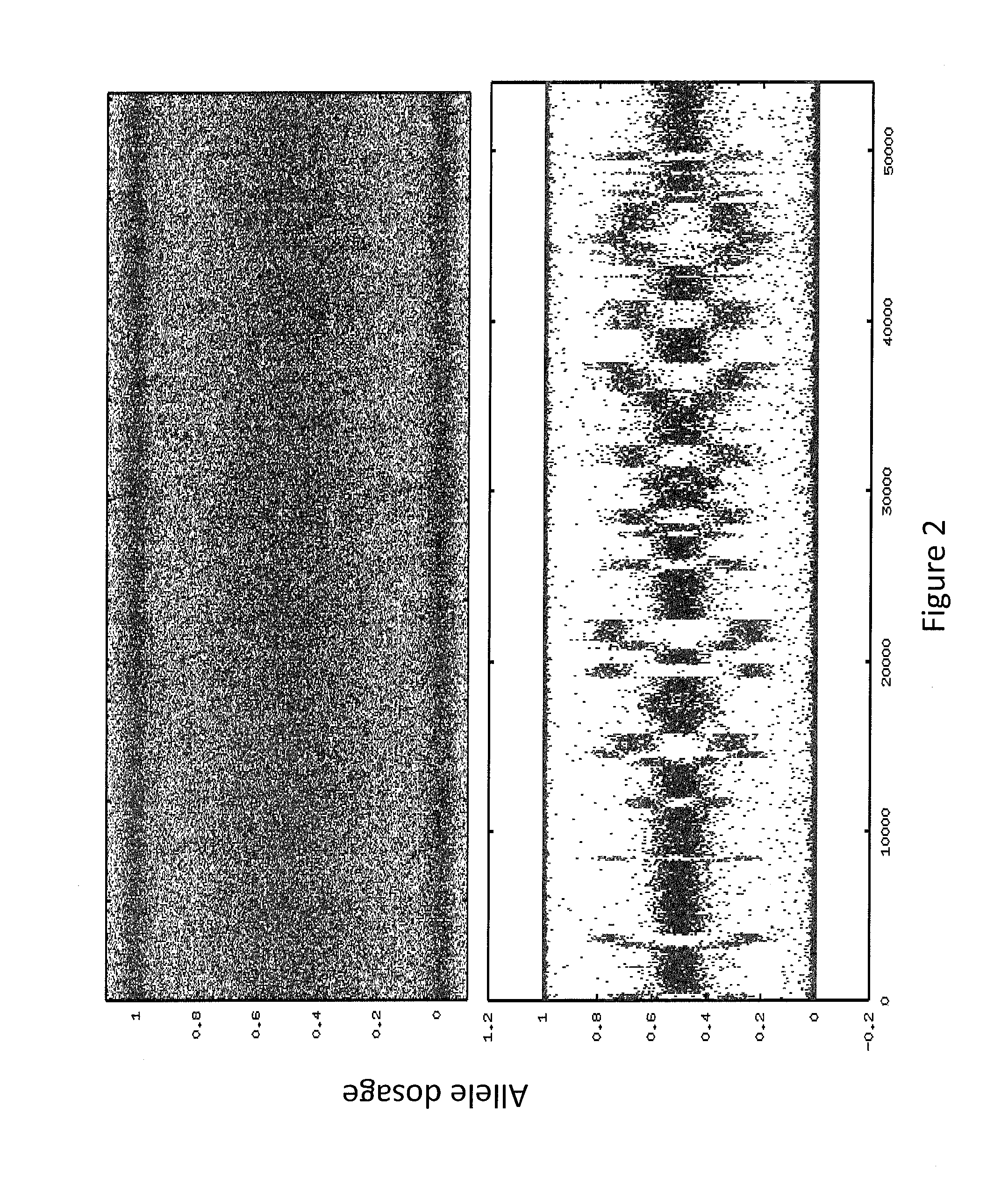Methods and materials for assessing homologous recombination deficiency
a technology of homologous recombination and methods, applied in the field of methods and materials for assessing homologous recombination deficiency, can solve the problem of serious public health problems such as cancer
- Summary
- Abstract
- Description
- Claims
- Application Information
AI Technical Summary
Benefits of technology
Problems solved by technology
Method used
Image
Examples
specific embodiments
[0145]As follows are specific embodiments of the present disclosure, that is, exemplary but non-limiting details of methods and systems according to the more general description above.
[0146]In some embodiments, the sample used is a frozen tumor sample. In some embodiments, the sample is from a particular breast cancer subtype chosen from triple negative, ER+ / HER2−, ER− / HER2+, or ER+ / HER2+. In some embodiments, the laboratory assay portion of the method, system, etc. comprises assaying the sample to sequence the BRCA1 and / or BRCA2 genes (as well as any other gene or genes in Table 1). In some embodiments, the laboratory assay portion of the method, system, etc. comprises assaying the sample to determine the allele dosage (e.g., genotype, copy number, etc.) for at least 10,000, 20,000, 30,000, 40,000, 50,000, 60,000, 70,000, 80,000, 90,000, 100,000 or more selected SNPs across the complete genome. In some embodiments the SNP analysis is done using an oligonucleotide microarray as disc...
embodiment 1
[0155]An in vitro method of predicting patient response to a cancer treatment regimen comprising a DNA damaging agent, anthracycline, topoisomerase I inhibitor, or PARP inhibitor, the method comprising:[0156](1) determining, in a sample comprising a cancer cell, the number of Indicator CA Regions comprising at least two types chosen from Indicator LOH Regions, Indicator TAI Regions, or Indicator LST Regions in at least one pair of human chromosomes of a cancer cell of said cancer patient; and[0157](2) diagnosing a patient in whose sample said number of Indicator LOH Regions, Indicator TAI Regions, or Indicator LST Regions is greater than a reference number as having an increased likelihood of responding to said cancer treatment regimen.
embodiment 2
[0158]The method of Embodiment 1, said at least one pair of human chromosomes is representative of the entire genome.
PUM
| Property | Measurement | Unit |
|---|---|---|
| length | aaaaa | aaaaa |
| size | aaaaa | aaaaa |
Abstract
Description
Claims
Application Information
 Login to View More
Login to View More - R&D
- Intellectual Property
- Life Sciences
- Materials
- Tech Scout
- Unparalleled Data Quality
- Higher Quality Content
- 60% Fewer Hallucinations
Browse by: Latest US Patents, China's latest patents, Technical Efficacy Thesaurus, Application Domain, Technology Topic, Popular Technical Reports.
© 2025 PatSnap. All rights reserved.Legal|Privacy policy|Modern Slavery Act Transparency Statement|Sitemap|About US| Contact US: help@patsnap.com



